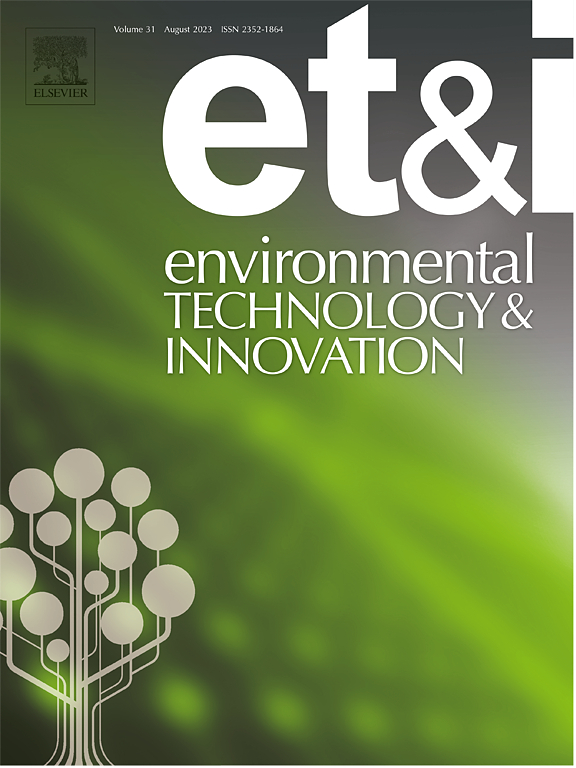Adaptation responses of Dunaliella sp. and its natural symbiotic bacteria to sulfamethoxazole
IF 6.7
2区 环境科学与生态学
Q1 BIOTECHNOLOGY & APPLIED MICROBIOLOGY
引用次数: 0
Abstract
Microalgal-bacterial consortia provide a sustainable, low-cost solution for antibiotic-contaminated wastewater remediation. Microalgae cultivation typically involves natural symbiotic bacteria, which are often overlooked. To fill this gap, this study evaluated the adaptive response of Dunaliella sp. and its natural symbiotic bacteria to sulfamethoxazole (SMX) through cultivation experiments and 16S rDNA sequencing. The results demonstrated strong SMX tolerance but limited removal efficiency by the consortium. The adaptive responses were characterized by increased bacterial diversity and connectivity, with quorum sensing bacteria-driven community changes and biofilm formation playing a critical role in this process. Dunaliella sp. exhibited strong antioxidant capacity (with catalase playing a key role) and increased extracellular polymeric substances secretion, which not only contributed to its tolerance but also promoted microalgae-bacteria interactions, enhancing consortium adaptability. These findings strengthen our understanding of the responses of natural symbiotic bacteria to antibiotics and advance the development of microalgae-bacteria symbiosis technology for wastewater treatment.
求助全文
约1分钟内获得全文
求助全文
来源期刊

Environmental Technology & Innovation
Environmental Science-General Environmental Science
CiteScore
14.00
自引率
4.20%
发文量
435
审稿时长
74 days
期刊介绍:
Environmental Technology & Innovation adopts a challenge-oriented approach to solutions by integrating natural sciences to promote a sustainable future. The journal aims to foster the creation and development of innovative products, technologies, and ideas that enhance the environment, with impacts across soil, air, water, and food in rural and urban areas.
As a platform for disseminating scientific evidence for environmental protection and sustainable development, the journal emphasizes fundamental science, methodologies, tools, techniques, and policy considerations. It emphasizes the importance of science and technology in environmental benefits, including smarter, cleaner technologies for environmental protection, more efficient resource processing methods, and the evidence supporting their effectiveness.
 求助内容:
求助内容: 应助结果提醒方式:
应助结果提醒方式:


